Your consulting firm needs to communicate information to your clients. Approaches, findings, insights, and recommendations, not to mention proposals, demographics, candy preference and more. Clients, on the other hand, often need a quick visual depiction of information.
The intersection of information and visuals is a Venn diagram, and your consulting firm must include at least one in your communication arsenal.
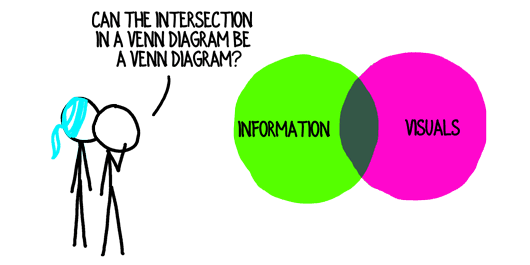
Ironically, the eponymous developer of the intersecting circles never referred to them as Venn diagrams.
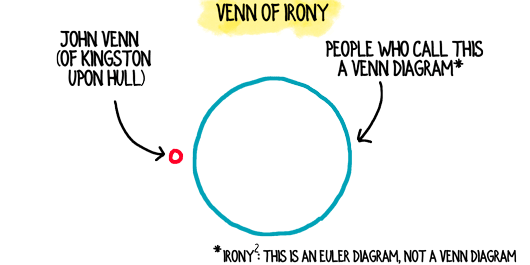
Venn diagrams have become a staple for consulting firms for good reason. The Venn diagram’s ability to communicate basic principles and the importance of overlap (or separation) is unmatched.
What Venn diagram is the absolute best? That’s open for debate, of course.
Some of my favorite Venn diagrams meant to help consulting firms like yours grow are show below. My favorite is missing, though, because you thought of it and I haven’t seen it yet! (And I sure hope you share it.)
Great Venn Diagrams for Consulting Firm Leaders
What You Think Defines How You Perform
Skills and knowledge are important factors in your business development efforts. However, the biggest determinant of your success (and any others on your team whom you’ve tasked with winning consulting projects) is how you think about marketing and winning consulting projects. This is a mindset game.
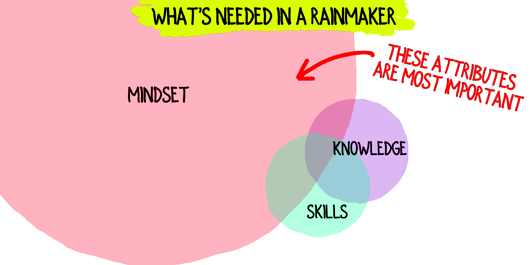
Go Narrower–There’s Still Plenty of Space
As a small consulting firm, it’s highly unlikely your challenge is that your potential market is too small. It’s a big world out there with a ton of prospects. Narrow your focus, increase your visibility and you’ll find plenty of untapped opportunity.
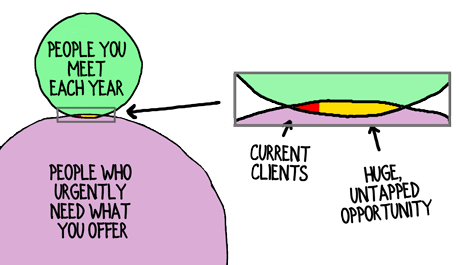
Higher Isn’t Always Better
While we’re on the topic of business development and prospects, keep in mind that your consulting firm’s best prospect isn’t necessarily in the C-Suite. Rather, it’s whoever holds budget authority and perceives the problem your consulting firm solves as important and urgent to address.
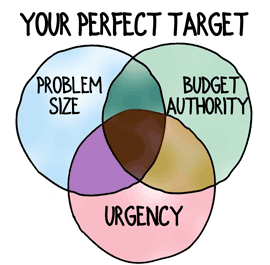
You’re More Than Your Results
Your consulting firm is (rightly) focused on delivering outstanding outcomes to your clients. However, to create a perception of high value that leads to effortless referrals, outcomes and results are only half the battle.
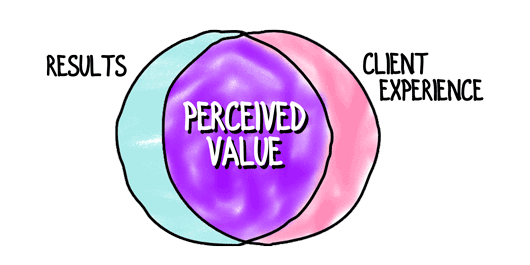
Consulting is a Personal Business
Developing and publishing outstanding thought leadership is difficult. To make it easier, ensure your consulting firm’s content improves the life of the individual (not just the company) that’s consuming your pearls of wisdom.
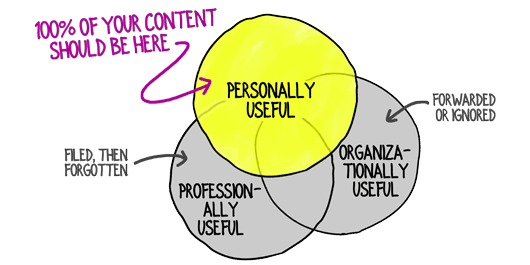
Share!
On the subject of Thought Leadership and Intellectual Property (IP): it’s understandable that you’re eager to protect your consulting firm’s smart thinking. Remember, though, IP is only valuable if people know about it.
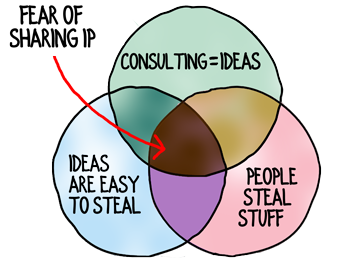
Sweet Tooth
Oops! Apparently, those cookies weren’t for me. Maybe if I hide them in this article and make them look like a Venn Diagram, nobody will notice.
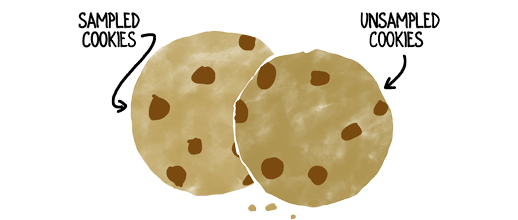
What’s your favorite Venn diagram, or at least one you use with your clients? Add yours in the comments. (If you post a comment and send your Venn diagram to support@davidafields.com, my team will add your diagram to your comment.)
Text and images are © 2024 David A. Fields, all rights reserved.

 David A. Fields Consulting Group
David A. Fields Consulting Group 

Awesome article as always, David! Information + Visuals clarify ideas… and become IP when systematized into actionable (money-making) insights.
My firm does sales strategy & customer research where we illustrate interviews to draw out unspoken buying codes. Our Visually Valuable Conversations framework (Venn diagram) distills down abstract data into “conversion cartoons.”
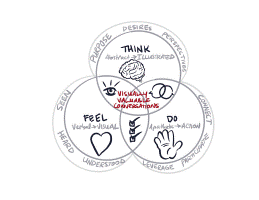
Outstanding, Eric. Your clients must appreciate the visual representation of the insights your research uncovers. Thanks for posting an example, too!
Good article. My approach has been using visual presentation: Venn Diagrams, flow charts and graphic presentations. This reinforced your ideas.
Smart approach, Peter. Combining graphic/visual representation with prose and tabular data (where appropriate) hits all the bases and helps you communicate with all styles of clients. I appreciate you chiming in on this one, Peter!
Love it! Visual depictions, Venn or otherwise, is a real weak spot for me. I am not oriented visually at all. Any ideas for how to build this muscle?
Hey Ruth – if you’re a reader, The Back of the Napkin by Dan Roam is a great resource!
Good suggestion, Laura. Thanks for posting it.
Good on you for being willing to improve an important-but-soft skill set. As Ruth points out, there are a few resources you could pick up, such as Dan Roam’s book.
Alternatively, give yourself 90 days to build this skill by attending to it daily:
1. Visit an article, book, site, newspaper, etc. that posts a visual. (Some sites do a daily visual, but a variety will help.)
2. Take 5 minutes to dissect the visual. What are they communicating? What are the key points? What visual technique did they use? Why is the visual helpful?
3. Spend 5 minutes trying to replicate the visual yourself. Don’t worry whether or not your version is any good. With practice, you’ll get better and faster.
There ya go. 10-12 minutes/day and in 90 days you’ll have a better-than-average skill set.
Let me know how it goes!
Thank you David! I love venn diagrams…there’s something about the number 3! At our firm, we use a venn to illustrate that skillful managers as those who are able to combine three distinct but overlapping responsibilities.
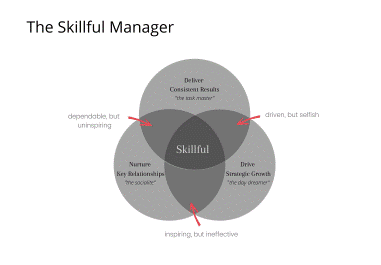
That’s a terrific diagram, Laura. I love that you’ve labeled the three “close, but not close enough” lenses. That shows your clients why all three responsibilities are required. Well done!
Google did an interactive doodle to honor John Venn back in 2014.
Thanks for pointing out that doodle, Praveen, which is very cute. (Also, wow on your memory!)